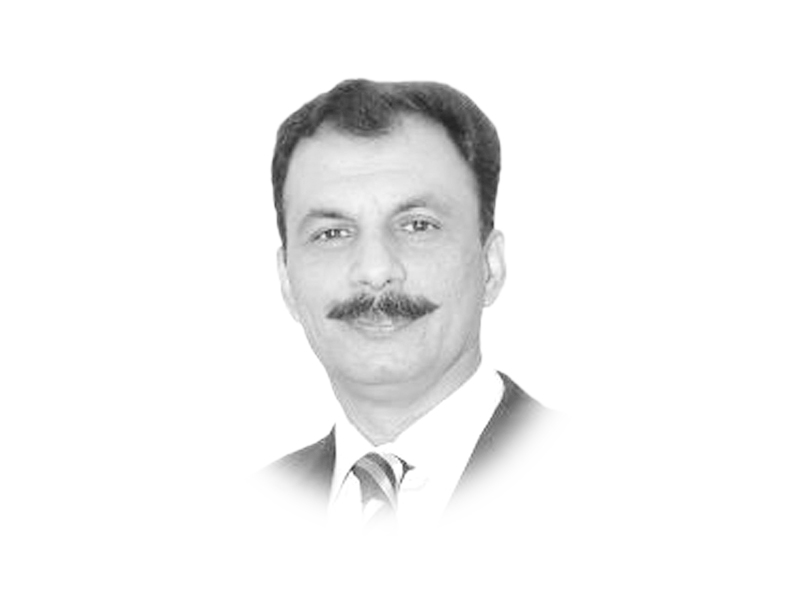
The selection of the home minster as a target was a smart move on part of the planners as his killing has conveyed numerous messages. The militants selected a former soldier and intelligence commander, an ardent supporter of the NAP and a vocal person who vehemently advocated the counter-narrative to the militants’ ideology. During his stint as home minister, Mr Khanzada facilitated capacity-building and structural development of Punjab’s counterterrorism department.
Even though our history carries an exhaustive list of such incidents, we have failed to readjust our security protocols. The assassination of Benazir Bhutto fully exposed the flaws in the protection protocols meant for high-profile personalities. However, even after countless similar incidents having taken place, we have failed to establish an exclusive VIP security apparatus.
The abortive suicide attacks targeting former federal interior minister, Aftab Ahmed Sherpao, spring to mind. On April 28, 2007, he was injured in a suicide attack in Charsadda. In another attack on December 21, 2007, a suicide blast targeting him killed at least 57 and injured over 100 at Jamia Masjid Sherpao, located in Charsadda. In the more recent past, senior politicians like Bashir Ahmad Bilour and Israr Gandapur were killed in suicide attacks. Previously, abortive attempts were made on the lives of Amir Muqam, Maulana Fazlur Rehman, General (retd) Pervez Musharaf and Asfandyar Wali Khan.
Understanding of the Shadi Khan attack requires an understanding of demographic and geographic realities. Attock shares a 250km long border with four districts of Khyber-Pakhtunkhwa (K-P), namely Nowshehra, Haripur, Kohat and Swabi. Given this, it is entirely possible that it may be a transit attraction for terrorists and criminals. The dried portion of the Indus from Ghorghushti to the Attock Bridge along the border of K-P requires joint policing by the police forces of K-P and Punjab. The manifestation of inter-provincial coordination should not be restricted to closed-door higher bureaucratic levels only. Its practical display should be visible on the ground as well.
The population of Shadi Khan is predominately Pakhtun. Between Shadi Khan and Swabi lies the vast River Indus, hence the probability of crossing of criminal elements through this point cannot be ruled out. The Report of the Pakistan Police Commission 1969-70 advocated the creation of a “river police”, something that was never translated into reality. It is high time that such a force is created to check the movement of criminal and militant elements along the river.
The areas of Chach, Ghorghushti, Jand and Fatehjang have imprints of the presence of extremists. In the past, we have seen an abortive assassination attempt made on the life of former premier Shaukat Aziz in Fatehjang. In addition in December 2007, a PAF employees’ bus carrying school children was attacked by a suicide bomber outside the Pakistan Aeronautical Complex at Kamra. On September 28, 2009, a Polish engineer, Poitr Stancza was kidnapped from Jand and executed by militants. On October 23, 2009, a suicide bomber killed eight people in an attack on a checkpost outside the Kamra airbase. Again, on August 16, 2012, terrorists attacked the air force installation at Kamra. Last year in June, two military officers and three civilians were killed in a suicide bombing near Fatehjang.
According to media reports, Mr Khanzada, being an ex-army officer, was overseeing his own security. Such assertions do not seem logical as the dynamics of policing and security are different, therefore, such personalities should be protected by trained professionals. The fact that the planners of the attack followed the minister like a shadow speaks of the flawed security arrangements. However, instead of adopting a punitive mode following this security lapse, it is important if we start the journey towards course correction.
The Punjab police is yet to establish an exclusive security division for VIPs. The situation warrants immediate VIP protection legislation, establishment of dedicated VIP protection units and revision of security protocols. The slow pace of rescue efforts after the incident is another worrisome aspect. The rescue efforts that took place exposed the poor coordination among different departments. Since Shadi Khan is located between GT Road and the Motorway, ideally the services of the Motorway police and the FWO should have been deployed instantly in the rescue efforts. The FWO has heavy cranes and ambulances at its disposal, and the Motorway police has hydraulic cutters that can cut iron rods and lift concrete structures up to 14 inches thick. In such emergencies, the smooth mobility of ambulances and rescue vehicles can be facilitated through the engagement of trained personnel of the Motorway police.
According to media reports, Mr Khanzada had been receiving threats. If that is true, questions arise as to how those threats were evaluated and responded to. Unfortunately, we do not have a specialised institutional mechanism to assess and process such threats. What we require is the establishment of a professional protective service, which has close coordination with law-enforcement and intelligence agencies.
We can derive some pragmatic inspiration from the long-drawn civil war in Sri Lanka. During the war against the LTTE, Sri Lanka lost a president, and numerous ministers, parliamentarians and other important personalities, along with countless civilians. It was the steadfastness, clarity and persistence of the country’s leadership and public that enabled Sri Lanka to win an unwinnable war. The security of important personalities is like a chess game in which the capture of the king is the ultimate aim of subversive forces. The primary job of protection agents is to save the king. Pakistani security professionals need to follow the principles of prevention and unpredictability, and use technology to the optimum level to win this war.
Published in The Express Tribune, August 19th, 2015.
Like Opinion & Editorial on Facebook, follow @ETOpEd on Twitter to receive all updates on all our daily pieces.



1732259077-0/carti-(1)1732259077-0-165x106.webp)








COMMENTS (9)
Comments are moderated and generally will be posted if they are on-topic and not abusive.
For more information, please see our Comments FAQ